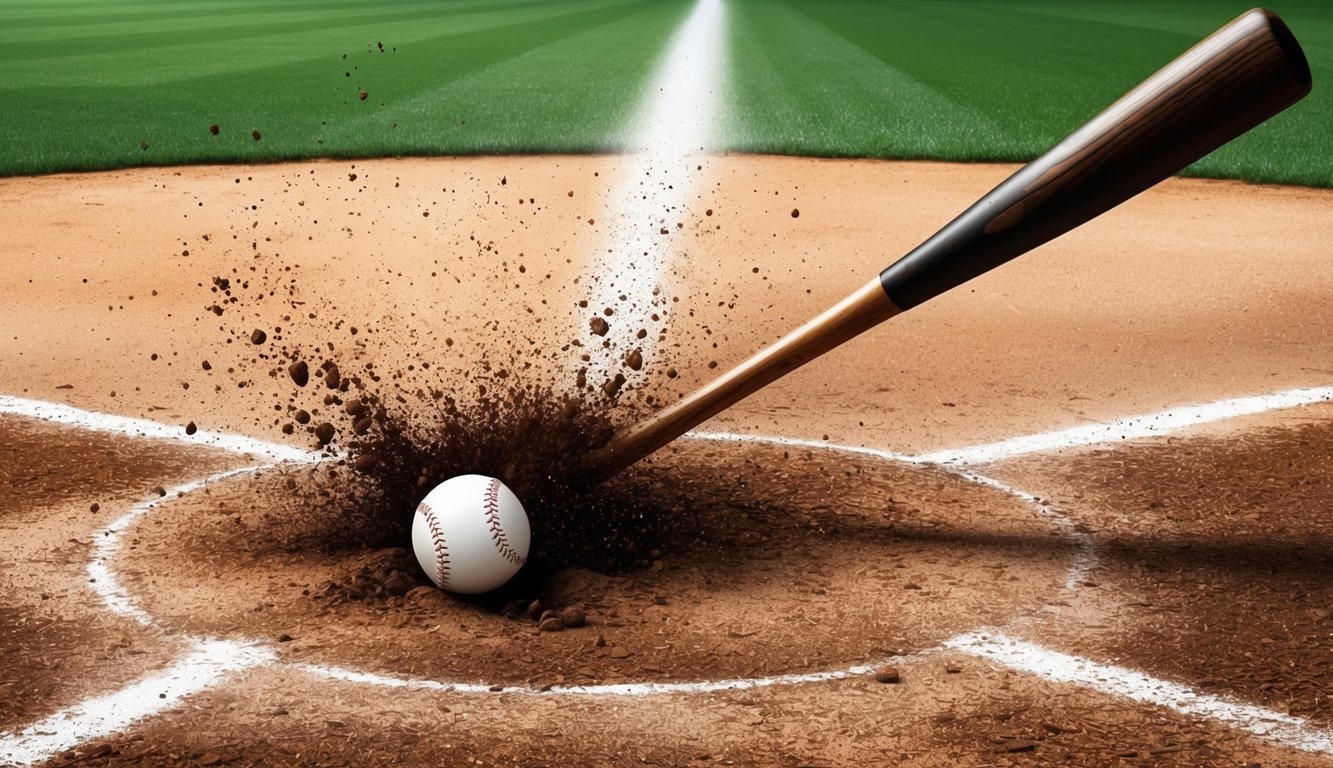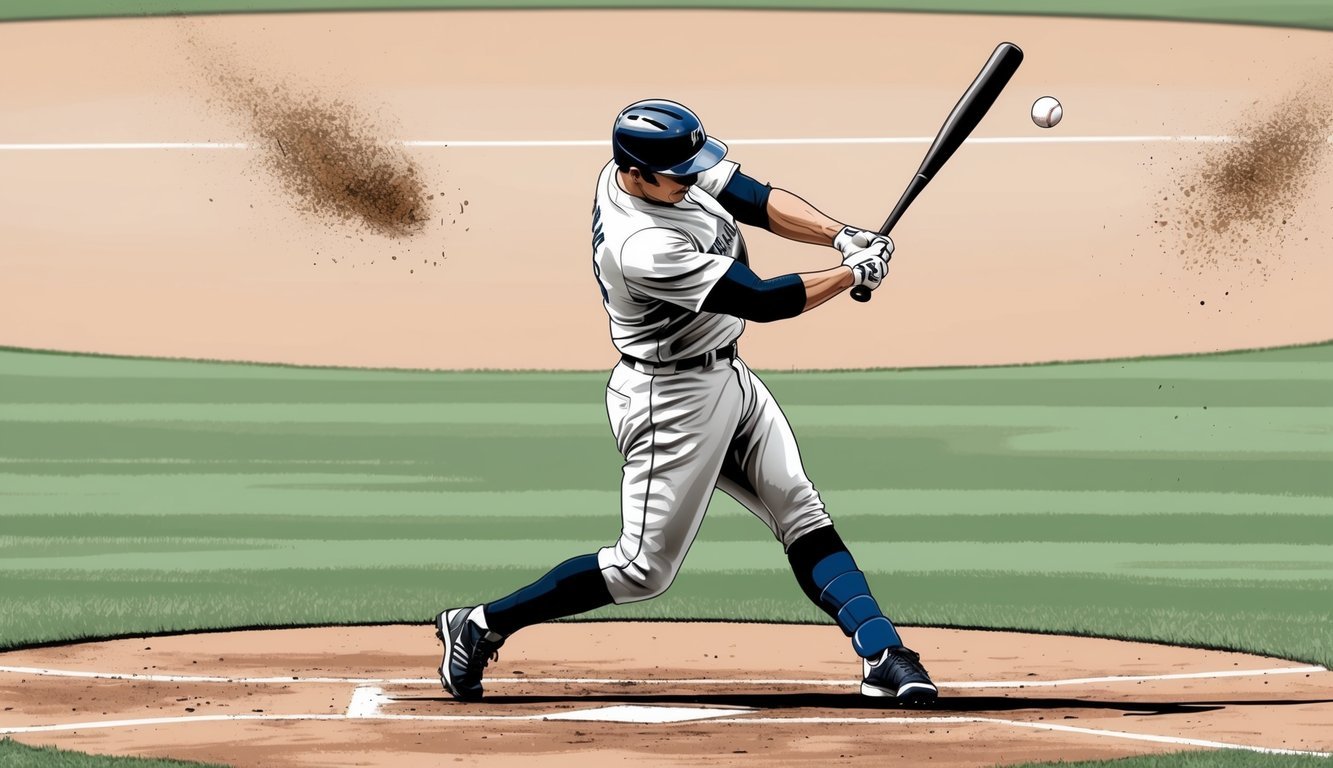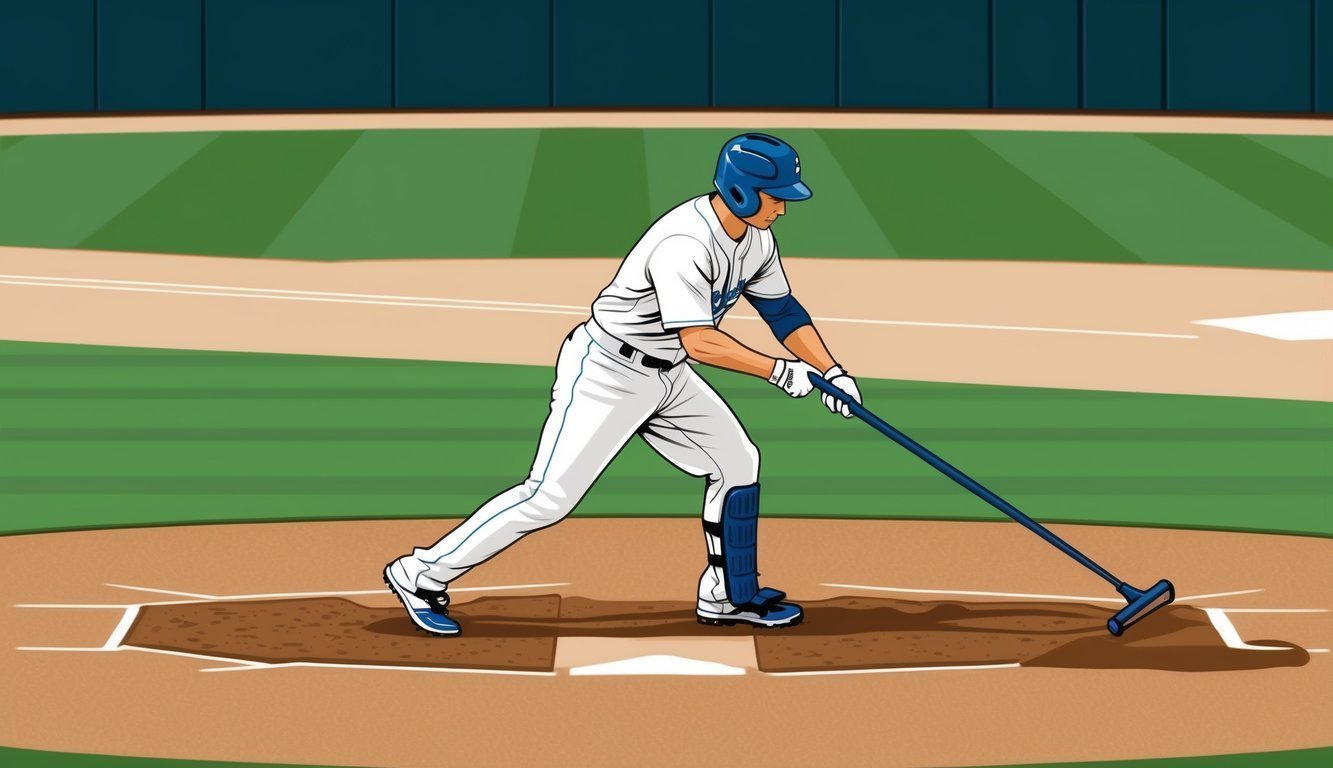Baseball is a sport rich with unique terminology, and “rake” is one of the most colorful expressions in the game’s lexicon.
When fans or commentators say a player is “raking,” they’re not referring to yard work.
In baseball, to rake means to hit the ball exceptionally well.
This often results in multiple extra-base hits or a string of successful at-bats.
This slang term has become an integral part of baseball culture, capturing the essence of offensive prowess.
A player who’s raking is in the zone, seeing the ball clearly, and making solid contact consistently.
It’s a testament to their skill, timing, and ability to read pitches effectively.
Raking isn’t just about individual achievement; it can change the entire dynamic of a game.
When a batter is raking, they become a feared presence at the plate, often forcing pitchers to alter their strategies.
This can lead to more opportunities for the entire team, making raking a valuable asset in any lineup.
Exploring the Slang: What ‘Rake’ Means in Baseball
In baseball, ‘rake’ is a popular slang term used to describe exceptional hitting performance.
This colorful expression captures the essence of a batter’s ability to consistently hit the ball with power and precision.
Etymology and Language Roots
The term ‘rake’ in baseball has interesting linguistic origins.
It likely stems from the gardening tool used to gather leaves or level soil.
In gambling circles, ‘rake’ refers to the house’s cut of poker winnings.
The baseball usage blends these concepts, painting a picture of a batter sweeping through pitches and collecting hits like a gardener gathers leaves or a casino collects its share.
The word entered baseball vernacular as players and fans sought vivid ways to describe impressive offensive displays.
Its short, punchy sound makes it perfect for quick exclamations during gameplay.
From Gardening to the Baseball Field
On the diamond, ‘raking’ paints a vivid image of a batter’s prowess.
It suggests a wide, sweeping motion – much like using a garden rake – to cover the strike zone effectively.
A player who ‘rakes’ hits the ball hard and often, spraying hits across the field.
This term applies to both power hitters launching home runs and contact hitters consistently finding gaps.
A ‘raking’ batter might go 4-for-5 with multiple extra-base hits or drive in several runs in a game.
Fans and commentators love using ‘rake’ for its descriptive power. “He’s really raking tonight!” instantly conveys a batter’s hot streak to listeners.
The Mechanics of Raking: Hitting Techniques and Skills

Raking in baseball requires a combination of precise techniques and well-honed skills.
Batters who excel at raking consistently demonstrate mastery over their swing, approach at the plate, and ability to generate power.
The Importance of a Solid Swing
A solid swing forms the foundation of raking.
Batters focus on maintaining a level swing path through the hitting zone.
This allows for maximum contact with the ball and increases the chances of solid hits.
Proper hand positioning and grip strength play crucial roles.
Players often experiment with different grip techniques to find what works best for them.
Timing is essential.
Rakers excel at recognizing pitches early and adjusting their swing accordingly.
They practice extensively to sync their swing with various pitch speeds and types.
Balance throughout the swing is key.
Rakers keep their weight centered and transfer it smoothly from back to front as they swing.
Consistency at the Plate
Consistency separates good hitters from great rakers.
It involves repeating successful mechanics pitch after pitch, at-bat after at-bat.
Rakers develop a reliable pre-pitch routine.
This might include subtle movements or mental preparation to get into the right mindset.
They maintain a disciplined approach, waiting for pitches they can drive.
This patience often leads to better pitch selection and more quality contact.
Mental toughness is crucial.
Rakers don’t let a few bad at-bats affect their confidence or approach.
They stay focused on their proven techniques.
Practice is essential.
Top hitters spend countless hours in the batting cage, refining their swing and working on hitting to all fields.
The Role of Power and Force
While raking isn’t just about power, it plays a significant part.
Rakers generate force through a combination of factors.
Lower body strength is crucial.
Strong legs provide a stable base and help transfer energy up through the body during the swing.
Core strength allows for explosive rotation.
This helps generate bat speed, a key component in hitting the ball with authority.
Rakers use their entire body in their swing.
They create a kinetic chain, transferring energy from their legs through their core and into their arms and bat.
Bat speed is critical.
Rakers work on exercises to improve their quick-twitch muscles and overall bat control.
Stats and Performance: Understanding a Player’s Impact

Evaluating a player’s offensive contributions involves analyzing key statistics that reflect their hitting prowess.
These metrics provide insights into a batter’s effectiveness at the plate and their overall impact on the game.
Crunching the Numbers: Batting Average and RBIs
Batting average remains a fundamental measure of a player’s hitting ability.
It’s calculated by dividing the number of hits by total at-bats.
A .300 average is considered excellent, meaning the player gets a hit 3 out of 10 times at bat.
Runs Batted In (RBIs) showcase a batter’s ability to drive in runs.
This stat measures how many runners a player brings home with their hits.
A high RBI count often indicates a player who excels in clutch situations.
On-base percentage (OBP) factors in walks and hit-by-pitches alongside hits.
It provides a broader view of how often a player reaches base safely.
A strong OBP can make a batter a valuable asset to their team’s offensive strategy.
The Significance of Extra-base Hits
Extra-base hits – doubles, triples, and home runs – demonstrate a player’s power and ability to drive the ball.
These hits often lead to more runs scored and can change the momentum of a game.
Slugging percentage measures the total bases a player accumulates per at-bat.
It’s calculated by dividing total bases by at-bats.
A high slugging percentage indicates a player who consistently hits for power.
OPS (On-base Plus Slugging) combines on-base percentage and slugging percentage.
It’s become a popular metric for assessing a player’s overall offensive performance.
An OPS over .800 is typically considered very good.
Home runs, while part of extra-base hits, deserve special mention.
They’re the ultimate display of a batter’s power and can dramatically impact a game’s outcome.
Stories of the Greats: Historic Examples of Baseball Rakers

Baseball history is filled with legendary hitters who exemplified the art of raking.
These players left an indelible mark on the sport with their exceptional batting skills and offensive dominance.
Some of these hitters, like Babe Ruth and Ted Williams, not only led their teams to victory but also redefined what it meant to be a formidable presence at the plate.
Their incredible ability to consistently get on base and drive in runs propelled them into discussions about the greatest baseball players of all time.
As the game evolved, subsequent generations of hitters have also aspired to reach the lofty heights set by these legends.
Babe Ruth: A Legacy of Hitting
Babe Ruth revolutionized baseball with his powerful swing and unmatched hitting ability.
He consistently hit the ball with tremendous force, earning him the nickname “The Sultan of Swat.”
Ruth’s career spanned from 1914 to 1935, during which he set numerous records.
He hit an astounding 714 home runs, a record that stood for decades.
His batting average of .342 over his career showcased his consistency at the plate.
Ruth’s ability to hit for both power and average made him the quintessential raker.
In 1927, he hit 60 home runs, a single-season record that remained unbroken for 34 years.
This feat solidified his status as one of baseball’s greatest hitters.
Ted Williams and the Art of Hitting
Ted Williams, known as “The Splendid Splinter,” was a master of hitting technique.
His approach to batting was scientific and methodical.
Williams played for the Boston Red Sox from 1939 to 1960.
He finished his career with a .344 batting average, the highest of any player in the modern era.
His keen eye and patience at the plate were legendary.
Williams led the league in on-base percentage 12 times during his career.
In 1941, he achieved a .406 batting average, the last player to hit over .400 in a season.
This remarkable feat demonstrates his exceptional skill as a raker.
Williams authored “The Science of Hitting,” a book that remains influential in baseball training.
His approach to hitting continues to inspire players and coaches today.
The Culture and Impact of Raking in Modern Baseball

Raking has become a celebrated aspect of baseball, influencing team dynamics and captivating fans.
It represents offensive prowess and game-changing potential on the field.
Influence on Team Dynamics and Strategy
Teams value players who can rake consistently.
These hitters often bat in key lineup positions, like third or fourth, to maximize their impact.
Their presence can change how pitchers approach the entire lineup.
Managers build strategies around rakers, using them to drive in runs or spark rallies.
Other players may be asked to get on base ahead of these power hitters.
This creates a ripple effect throughout the batting order.
Rakers can boost team morale and confidence.
When one player is on a hot streak, it can inspire teammates to step up their game.
This positive momentum can be crucial during tight playoff races or championship runs.
What Fans and Players Appreciate About Raking
Fans love the excitement rakers bring to the game.
Big hits and home runs create memorable moments and generate buzz in the stadium.
Spectators often wear jerseys of their favorite rakers and cheer loudly during their at-bats.
Players respect the skill and dedication required to rake consistently.
It takes years of practice to develop the hand-eye coordination and power needed.
Many aspiring hitters study the techniques of successful rakers to improve their own performance.
Raking can lead to individual accolades like All-Star selections and MVP awards.
These achievements not only recognize personal excellence but also bring pride to the team and its fanbase.
